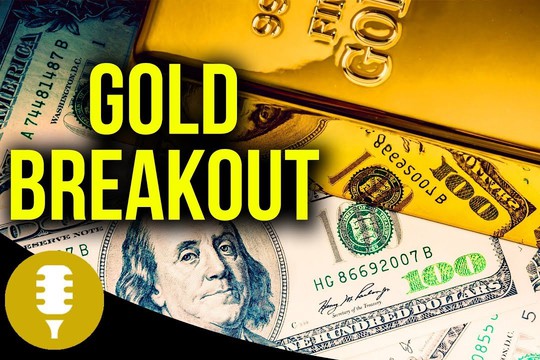30 percent of all nations now deal with sanctions from the United States, the EU, Japan and the UK – up from 10 percent in the early 90s. Results? – US Dollar does down.
Today analysts extremely concur that a weakening United States dollar can not perhaps lose its status as the world’s dominant currency since there is “no option” on the noticeable horizon. Possibly, however do not inform that to the lots of nations racing to discover an option, and such complacency will just accelerate their search, Financial Times notes.
The prime example today is gold, up 20 percent in 6 months.
Reserve banks are purchasing more lots of gold now than at any time given that information starts in 1950 and presently represent a record 33 percent of month-to-month worldwide need for gold.
This purchasing boom has actually assisted press the rate of gold to near-record levels and more than 50 percent greater than what designs based upon genuine rate of interest would recommend. Plainly, something brand-new is driving gold rates.
Look closer at the reserve bank purchasers, and 9 of the leading 10 remain in the establishing world, consisting of Russia, India and China. Not coincidentally, these 3 nations remain in talks with Brazil and South Africa about producing a brand-new currency to challenge the dollar. Their instant objective: to trade with one another straight, in their own coin.
Hence the earliest and most standard of possessions, gold, is now an automobile of reserve bank revolt versus the dollar. Frequently in the past both the dollar and gold have actually been viewed as sanctuaries, today gold is viewed as much more secure.
Throughout the brief banking crisis in March, gold kept increasing while the dollar wandered down.
And why are emerging countries rebelling now, when worldwide trade has been based upon the dollar given that completion of the 2nd World War? Since the United States and its allies have actually significantly relied on monetary sanctions as a weapon.
Amazingly, 30 percent of all nations now deal with sanctions from the United States, the EU, Japan and the UK – up from 10 percent in the early 90s.
Till just recently, the majority of the targets were little. Then this group introduced a full-blown sanctions attack on Russia for its intrusion of Ukraine, cutting off Russian banks from the dollar-based worldwide payment system.
All of a sudden, it was clear that any country might be a target.
Too positive in the indomitable dollar, the United States saw sanctions as a cost-free method to combat Russia without running the risk of soldiers. However it is paying the rate in lost currency loyalties. Countries cutting offers to trade without the dollar now consist of old United States allies such as the Philippines and Thailand.
The variety of nations with reserve banks taking a look at methods to introduce their own digital currency has actually tripled given that 2020 to more than 110, representing 95 percent of the world’s GDP. Lots of are evaluating these digital currencies for usage in bilateral trade – another open obstacle to the dollar.
The threat for America is that its overconfidence grows, fed by the “no option” story. That story rests on worldwide rely on United States organizations and guideline of law, however this is precisely what weaponising the dollar has actually done so much to weaken.
read more in our Telegram-channel https://t.me/The_International_Affairs

 10:52 01.05.2023 •
10:52 01.05.2023 •























